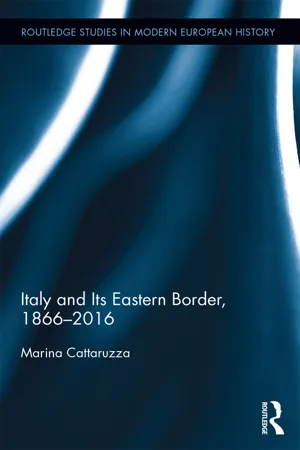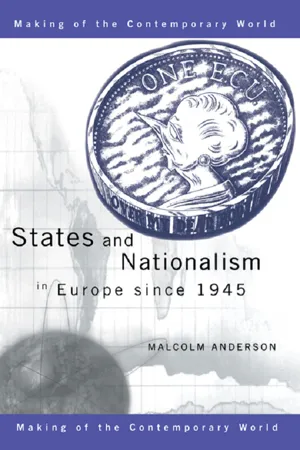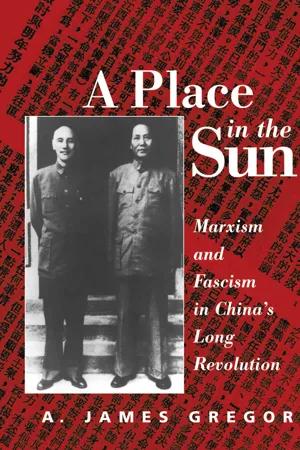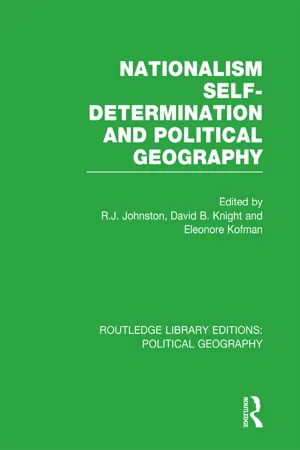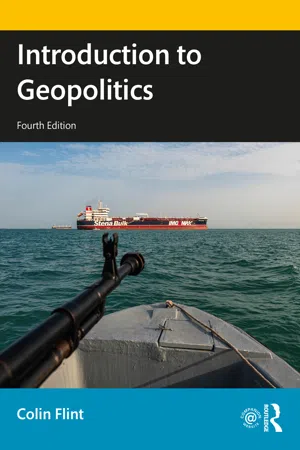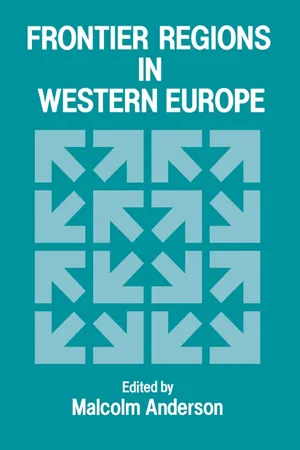Geography
Irredentism
Irredentism is a political movement that seeks to reclaim and unify a territory that is believed to be historically or ethnically connected to a particular nation-state. It often involves the use of force or diplomacy to annex or reclaim territory that is currently under the control of another state. Irredentism can lead to conflicts and tensions between neighboring countries.
Written by Perlego with AI-assistance
Related key terms
7 Key excerpts on "Irredentism"
- eBook - ePub
For Kin or Country
Xenophobia, Nationalism, and War
- Stephen Saideman, R. William Ayres(Authors)
- 2008(Publication Date)
- Columbia University Press(Publisher)
The Way Ahead: Expectations and ConceptsOur theory posits several conditions that jointly produce Irredentism: politicians must rely on constituents who strongly identify with the kin in the “lost territory,” these constituents are not opposed to the possibility of increasing the heterogeneity of the country, these constituents are less likely to benefit from economic integration; and the kin are salient through their activities, insecurity, and/or power. To be clear, an understanding of the relevant nationalism can clarify when politicians can be good nationalists without being irredentist. While the conventional wisdom has focused on the possibilities of success and the challenges presented by the international community, for this book’s approach, the external conditions that matter the most are the treatment and behavior of the kin. This does provide an avenue for external influence, but we expect the power and impact of the international community to be much less than is currently believed.This chapter has focused mostly on two sets of approaches to this question of understanding irredentist policy: those stressing international constraints (norms and international organizations) and those emphasizing domestic dynamics. Ultimately, we consider several of the conditions to be operating jointly—economic interests, attitudes toward kin and others, and the status of the kin. We do not expect relative power, the status of borders, a failed history of Irredentism, or the efforts of international organizations through membership processes to matter as much. The key question then for the case studies to follow is, how do we measure our concepts? How do we know if a country was irredentist? How do we know that xenophobia exists as a restraint? Let us specify our concepts, starting with our dependent variable of Irredentism and then moving onto our independent variables.What Is Irredentism?As we defined it in the introduction, Irredentism in our book refers to territorial claims made by one state that are based on ethnic ties to a minority population that resides within another recognized state. For the case studies, we focus on activities by one country to gain a territory inhabited by ethnic kin—policies overt and/or covert to alter existing boundaries to bring in both desired people and territory. Somalia, again, is a good example, as its policies have covered the range of policies we have in mind, from giving arms to kin in neighboring countries to a conventional invasion of Ethiopia in 1977. Countries can do much to aid their kin short of Irredentism, but merely supporting the rights of kin to organize and act politically is not necessarily Irredentism.37 - eBook - ePub
- Marina Cattaruzza(Author)
- 2016(Publication Date)
- Routledge(Publisher)
2 From Irredentism to Nationalism1 Irredentism and Power Politics
Just a few years after its rise, Irredentism began to move away from its original roots in Mazzinian thought and to change the scope of its ambitions, adapting them to the foreign policy of the newly-born nation state. The revival of Cesare Balbo’s theses led people to focus their attention on the compensations that Italy could demand in exchange for an hypothetical Austrian expansion into the Balkan Peninsula, overestimated in its extent if not its likelihood.1 Federico Chabod accurately remarked that Irredentism itself ended up by territorializing the national problem, thus abandoning any universalistic aspirations.2This ideological and theoretical shift in how to accomplish national unification occurred as the political and cultural climate changed in Europe as a whole. After reaching their zenith in the democratic and national movements of the years 1848–89, Romantic ideals were replaced by a more prosaic Realpolitik, embodied by the German Chancellor Bismarck and his bold policy of alliances. As Chabod remarked: “Romanticism’s ideals and lifestyles waned; very different ones took hold instead, characterized no doubt by a lowering of the moral and cultural tone, as much as by a significant broadening of their reach.”3As the nation became an end in itself, a conservative and stabilizing component within the renewed concert of European powers, the link between the concepts of nation and freedom, theorized by Mazzini, among others, came untied. Even though Mazzinianism was part of the extreme Left—a small minority with a handful of deputies in the Italian Parliament, and with ties to the (at times conspiratorial) network of republican associations—its original ideology began to morph to the point of contributing to the early expression of the goals of power politics and imperialist expansion. - eBook - ePub
- Malcolm Anderson(Author)
- 2013(Publication Date)
- Routledge(Publisher)
6 Irredentism and separatism The most important claim that can be made for nationalism is that it changed the political map of Europe in the nineteenth and early twentieth centuries. In the late twentieth century, however, there has been a change – modifications of the frontiers between states has become a rare occurrence. The upheavals in Eastern Europe, following 1989, created new states but without changing frontiers because the successor states respected, in ex-Yugoslavia with much difficulty, the internal boundaries of the states from which they emerged. Seizing territory by armed force, a commonplace until the end of the Second World War, is now very difficult, as the Israelis have discovered. This represents a major change in the international system and has important implications for nationalism. Nations historically were forged by armed conflict which either brought together disparate territories, as in the United Kingdom and France, and assimilated, with more or less success, the peoples who inhabited them, or, as in the case of Germany and Italy in the mid-nineteenth century, unified culturally similar peoples. Violence seemed inseparable from state and nation building, and the two seemed interconnected. Has this process run its course? Does relative territorial stability mark a weakening of nationalist ideas and passion? Are national identities being shaped in ways other than war and violence? Is it possible that new identities may emerge but as a result of different processes to those of the past? TERRITORIAL CLAIMS In the nineteenth century and first half of the twentieth century, the most common territorial claims by nationalists were based on irredentist and separatist demands. The first, derived from the Latin terra irredenta, was for ‘unredeemed land’, territory which belonged to a people by right but was under the control of another state - eBook - ePub
A Place In The Sun
Marxism And Fascimsm In China's Long Revolution
- A. James Gregor(Author)
- 2019(Publication Date)
- Routledge(Publisher)
2 but without the intensity that was to typify the organized Nationalists of the first years of the new century—and that of Fascism during the interwar period.Marxism and Marxism-Leninism had almost no theoretical grasp of nationalism, much less Irredentism. Having failed in that regard, Marxism and its variants never really understood either Fascist or Chinese Irredentism and hence failed to understand a good deal of the international politics of our time.Nationalist and Fascist IrredentismIrredentism is generally identified with the political sentiment attached to the restoration of lost lands, portions of national territory presumably languishing under “alien rule.” More often than not, the inhabitants of those lands are considered members alienated from the motherland by the interposition of foreigners.Irredentism was a constant among Italian nationalists from the time of the Risorgimento and, as a political sentiment, it persisted into the twentieth century. After public interest was fostered by a roster of publications, a formal organization of nationalists was undertaken in 1910.3 The very first articles of organization of the Italian Nationalist Association (Associazione Nazionalista Italiana) announced that Italian nationalism was, and would remain, unequivocally irredentist.4The threads that made up the fabric of organized Italian Nationalism can be traced back into the nineteenth century, at a time when Irredentism already occupied the concerns of many. But the “new nationalism” of reactive response and developmental intent that began to find expression about the time of the organization of the Associazione Nationalista was certainly more than Irredentism. Within the new constellation of factors, Irredentism was to be singularly transformed. - R. J. Johnston, David Knight, Eleonore Kofman(Authors)
- 2014(Publication Date)
- Routledge(Publisher)
The Syrian example is particularly instructive since it refers to the rare instance in the map of the world where a state has dissolved and then reformed itself. Elsewhere in the Middle East the right to a firm territorial base lies at the root of many of the present conflicts. The establishment of the State of Israel deterritorialised the Palestinians, who were subsequently dispersed throughout much of the Middle East. In the struggle to maintain themselves in the region, both Israelis and Palestinians employ territorial strategies of occupancy and containment. For the Palestinians, a cultural identity has become a national identity that seeks unity through sovereign control of a bounded territory (Portugali, chapter 10). Internal unity, based on an accepted nationhood and territorial demarcation, has constituted an important aspect of the practical politics and strategies of nationalist movements. As we have seen, an assertion of a distinctive geography and history is a vital task in the unification of territory claimed by nationalist movements. The latter must draw together a complex set of factors to link the (possibly) diverse people who live in the different parts of the common (national) territory, physically, socially and especially psychologically, so that they identify both with themselves as a ‘people’ and with the territory. A nationalism thus uses a whole set of symbols to help forge significant national bonds. And, as suggested earlier, a nationalist movement selectively draws from history to legitimate its own hegemonic interpretation of the ‘nation’. For national unity to be protected, the enemy or ‘other’ must be designated outside the (national) society for which nationhood and a state are claimed. At the same time, as Linz (1985) points out, the political implications of this mass support and the control of territory by a sovereign body mean that, in most contemporary societies, nationalism founded on ‘primordial’ elements (i.e- eBook - ePub
- Colin Flint(Author)
- 2021(Publication Date)
- Routledge(Publisher)
First, we will define our terms and examine the ways in which boundaries are created and maintained, and the geopolitical role they play. The broader geopolitics of territoriality will then be described, along with the historic process of state formation. To help understand contemporary conflicts, we will provide a brief catalogue of potential border disputes by examining the woes facing the fictional country of Hypothetica. We will then expand our discussion with a case study of the Israel–Palestine conflict. Boundaries and borders are geographical features that may also reflect movements towards peace, the topic of the following section of the chapter. We will relate the demarcation of a boundary to global geopolitical conflict with a case study of the Korean peninsula. Boundaries are designed to manage, and sometimes prevent, movement – or what are often called flows. We illustrate the tension between flow and territory with a discussion of the EU’s attempts to control refugee movements. Finally, we discuss the territoriality of the sea, and the role of maritime disputes in geopolitics.Constructing territory
Geopolitical agents construct territory (Elden, 2009). Geographer Robert Sack (1986) has called such processes territorialization, or the way that territory is used to enable politics. In the case of the boundaries of colonial Africa, for example, or the demarcation of the ceasefire line between North and South Korea that became recognized as an international boundary, external powers defined the course of boundaries. Over time these established boundaries became recognized features, or structures, of new geopolitical activity. The broader point to consider here is that all forms of territorial politics are the product of agency. For example, the simple act of a homeowner erecting a fence to keep a neighbour’s dog off their lawn is an act to declare a particular piece of territory “off limits.” - eBook - ePub
- Malcolm Anderson(Author)
- 2013(Publication Date)
- Routledge(Publisher)
Of the fourteen European states that acquired independence in the present century, only four – Norway, Iceland, Estonia and Latvia – started out with boundaries that were not subject to major dispute. In all the other cases, irredentist claims or defensive counterclaims were supported by a variety of weapons ranging from diplomatic action to military intervention. Romania disputed the Dobrudja with Bulgaria, and Bessarabia with Russia/USSR; Bulgaria, Turkey and Greece were at loggerheads over Thrace; Bulgaria, Yugoslavia and Greece each claimed Macedonia as part of its national territory; Albania claimed the adjoining Kosmet district of Yugoslavia; Hungary unsuccessfully resisted the transfer of three million Magyars in Transylvania, Slovakia and Croatia/Southern Hungary to Romania, Czechoslovakia and Yugoslavia respectively; the German-speaking world objected to the inclusion of three million Germans inside the Czechoslovak border; Upper Silesia was in dispute between Germany and Poland, the Memel territory between Germany and Lithuania, and Vilnius between Poland and Lithuania; further north, Karelia was at issue between Finland and the USSR and the Aaland Islands between Finland and Sweden; and, finally, Northern Ireland, still part of the United Kingdom, was claimed by the Irish Free State. 3 While such processes as population exchange, expulsion, assimilation and boundary alteration have, together with the passage of time, contributed to an increased acceptance of existing frontiers, the inflammation of smouldering ethnic tensions in some, at least, of these cases and in long-dormant cases elsewhere remains an omnipresent possibility. Beneath the apparent free-for-all of the territorial claims of the early years of this century may be detected two general justificatory principles, which might loosely be labelled ‘ethnic’ and ‘historic’ arguments relating to boundary definition
Index pages curate the most relevant extracts from our library of academic textbooks. They’ve been created using an in-house natural language model (NLM), each adding context and meaning to key research topics.

